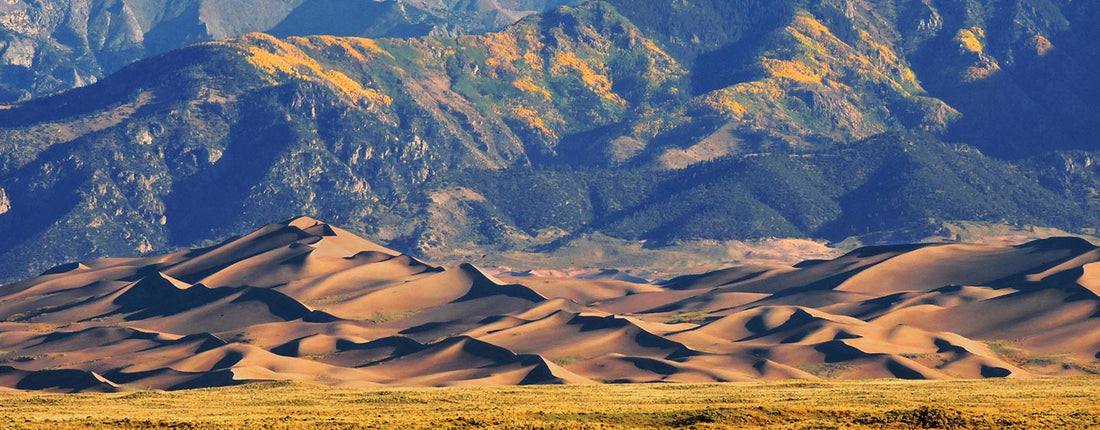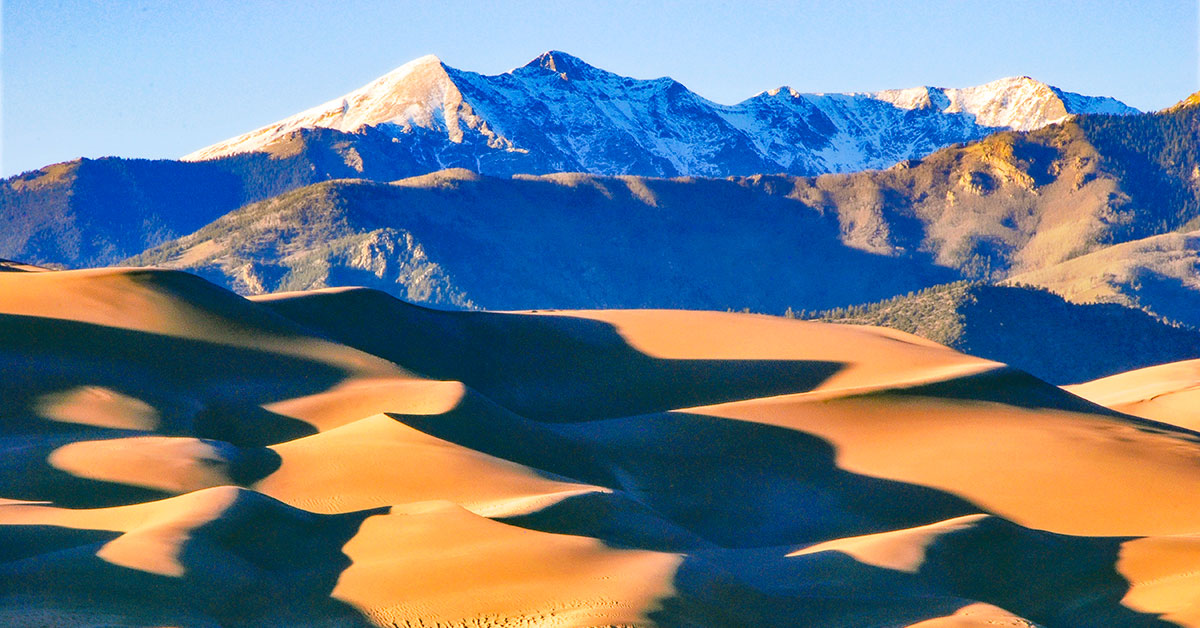
Celebrate Great Sand Dunes National Park's Anniversary - September 12th
Robert DeckerOne of Colorado's lesser known national parks is Great Sand Dunes National Park & Preserve. The tallest dunes in North America are the centerpiece in a diverse landscape of grasslands, wetlands, conifer and aspen forests, alpine lakes, and tundra. Here you can experience this diversity through hiking, sand sledding, splashing in Medano Creek, wildlife watching, and more! The park and preserve are always open, so you can also experience night skies and nocturnal wildlife.

The park contains the tallest sand dunes in North America and cover an area of about 30 square miles. It is estimated to contain over 5 billion cubic meters of sand. The sand dunes lie on the eastern edge of the San Luis Valley and are up to 750 feet tall. Sediments from the surrounding mountains filled the valley over geologic time periods. After lakes within the valley receded, exposed sand was blown by the predominant southwest winds toward the Sangre de Cristos, eventually forming the dunefield over an estimated tens of thousands of years. The four primary components of the Great Sand Dunes system are the mountain watershed, the dunefield, the sand sheet, and the sabkha. Ecosystems within the mountain watershed include alpine tundra, subalpine forests, montane woodlands, and riparian zones.

Visitors must walk across the wide and shallow Medano Creek to reach the dunes in spring and summer months. The creek typically has a peak flow from late May to early June in most years. From July through April, the creek is usually no more than a few inches deep, if there is any water at all. Hiking is permitted throughout the dunes with the warning that the sand surface temperature may reach 150°F in summer.

Sandboarding and sandsledding are popular activities, both done on specially designed equipment which can be rented just outside the park entrance or in Alamosa. Visitors with street-legal four-wheel drive vehicles may continue past the end of the park's main road to Medano Pass on 22 miles of unpaved road, crossing the stream bed of Medano Creek nine times and traversing 4 miles of deep sand. Hunting is permitted in the preserve during the months of autumn, while hunting is prohibited within national park boundaries at all times. The preserve encompasses nearly all of the mountainous areas north and east of the dunefield, up to the ridgeline of the Sangre de Cristos.

Over 250 species of birds have been documented at Great Sand Dunes National Park and Preserve. In summer months, many species nest here in tundra, forests, grasslands, or wetlands including white-tailed ptarmigans, peregrine falcons, mountain bluebirds, northern pygmy owls and burrowing owls, golden eagles and bald eagles, and sandhill cranes bring excitement each spring when they return by the thousands to the San Luis Valley.
Evidence of human habitation in the San Luis Valley dates back about 11,000 years. The first historic peoples to inhabit the area were the Southern Ute Tribe, while Apaches and Navajo also have cultural connections in the dunes area. In the late 17th century, Don Diego de Vargas—a Spanish governor of Santa Fe de Nuevo México—became the first European on record to enter the San Luis Valley. Juan Bautista de Anza, Zebulon Pike, John C. Frémont, and John Gunnison all travelled through and explored parts of the region in the 18th and 19th centuries. The explorers were soon followed by settlers who ranched, farmed and mined in the valley starting in the late 19th century. The park was first established as a national monument in 1932 to protect it from gold mining and the potential of a concrete manufacturing business.
The park was originally designated Great Sand Dunes National Monument on March 17, 1932 by President Herbert Hoover. The original boundaries protected an area of 35,528 acres. A boundary change and redesignation as a national park and preserve was authorized on November 22, 2000 and then established by an act of Congress on September 24, 2004. The park encompasses 107,342 acres while the preserve protects an additional 41,686 acres for a total of 149,028 acres.
Click here to see the Great Sand Dunes National Park poster.
Rob Decker is a photographer and graphic artist with a single great passion for our National Parks! When he was just 19, he studied under Ansel Adams in Yosemite. Now he’s on a journey to create original, WPA-style artwork for each of our national parks!
Click here to learn more about Rob's work and The National Park Poster Project.

